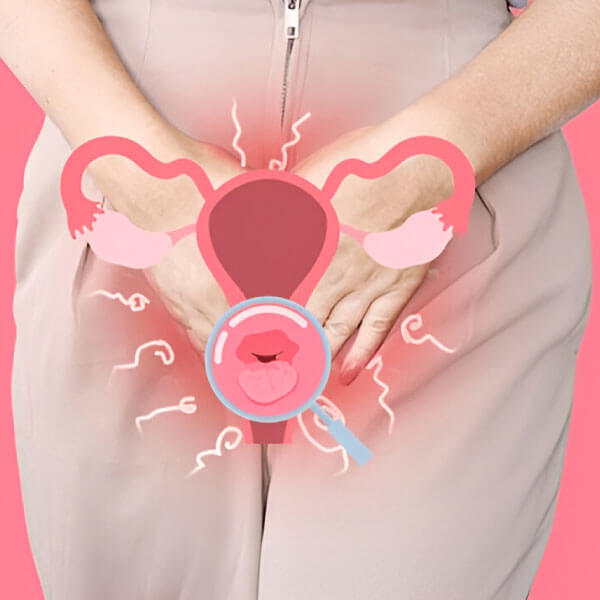
Yeast infections are common and can affect the skin and moist body areas. They often cause itching, soreness, or irritation. For soothing care and expert advice, visit our DOXXES store on Westheimer/Dairy Ashford.
What Is Yeast Infections
Yeast infections, also called candidiasis, happen when Candida fungi grow too much on the skin or inside the body.
Types include:
- Superficial – affects skin or mucous membranes
- Deep – involves internal organs
- Provoked – triggered by antibiotics or medical devices
Why Does Yeast Infections Happen?
Emotional causes:
- High stress or anxiety
- Past trauma or emotional upset
- Relationship stress
Physical causes:
- Use of antibiotics or other infections
- Hormonal changes (like pregnancy or menopause)
- Pelvic floor or body structure issues
Often, both emotional and physical causes mix to trigger symptoms.
Examples and Identifying Triggers
Common examples:
- Itching and discharge from vaginal yeast infections
- White patches in the mouth (oral thrush)
- Rashes in skin folds (intertrigo)
- Diaper rash in babies
Finding triggers:
- Watch for patterns—track flare-ups after certain foods or habits
- Notice changes—like new soaps or laundry products
- Adjust routines—try gentler products or better-fitting clothes
Who It Affects and Gender Differences
Yeast infections can affect anyone, regardless of gender.
- In women – itching, discharge, or burning
- In men – redness, rash, or discomfort on the penis
Both may feel pain during sex and emotional stress. Understanding signs early can make treatment easier.
How a Sex Therapist Can Help
A therapist can:
- Explore your history to find triggers or stressors
- Look for emotional concerns like anxiety or past trauma
- Offer tools to reduce stress and improve comfort
Ways to Treat and Cope with Yeast Infections – Counseling and Therapy
- Talk Therapy – to manage stress and emotional causes
- Medical Care – antifungal creams, pills, or suppositories (like boric acid, under guidance)
- Long-Term Plans – changes in diet, habits, or adding probiotics may help prevent repeat infections

How Doxxes.love Can Help
Doxxes.love has items that support healing and comfort:
- Water-based lubricants to ease dryness
- Pelvic floor tools to reduce tension
- Soft vibrators to aid gentle stimulation
- Breathable underwear for healing
Every item includes safe-use instructions. Using these tools with therapy can improve results.
Talking About Yeast Infections with Others
- Be open: “I feel uncomfortable when symptoms flare up”
- Use “I” statements to express yourself
- Talk in a private, calm setting
- Learn as a team—read articles or watch videos together
- Get professional support if it gets worse
Visit Our DOXXES Store on Westheimer/Dairy Ashford
Stop by our calm and friendly store to find helpful products. Our team offers private, supportive service to guide you with care.
Conclusion
Managing yeast infections is easier with the right tools and honest conversation. For trusted products and expert advice, visit DOXXES on Westheimer/Dairy Ashford—we’re here to help you feel better.
FAQs
- What is a yeast infection?
A yeast infection, or candidiasis, is caused by an overgrowth of Candida fungus. It can affect the skin, mouth, genitals, or internal areas. - What are the common types of yeast infections?
• Superficial – affects skin, vagina, or mouth
• Deep – impacts internal organs
• Provoked – triggered by antibiotics or medical devices - What causes yeast infections?
They may be caused by emotional stress, past trauma, antibiotics, hormonal shifts (like menopause or pregnancy), or structural body issues. - What are the symptoms of a yeast infection?
Common signs include itching, burning, redness, white discharge, rashes in skin folds, or white patches in the mouth. - How can I identify what triggers my yeast infections?
Track symptoms after eating certain foods, using new soaps, wearing tight clothes, or during stressful periods. Patterns help identify what to avoid. - Who can get a yeast infection?
Anyone—regardless of gender. Women often notice itching and discharge; men may feel redness or rashes. Both may experience discomfort during intimacy. - Can therapy help with recurring yeast infections?
Yes. A sex therapist can help manage stress, explore emotional triggers, and guide you through healthier coping tools to support healing. - How are yeast infections treated?
Treatment may include antifungal creams, oral medications, suppositories, and lifestyle changes like dietary adjustments or adding probiotics. - What products can help manage symptoms?
DOXXES offers water-based lubricants, pelvic floor tools, soft vibrators, and breathable underwear—all designed to reduce irritation and support comfort. - Where can I find safe support and products for yeast infections?
Visit the DOXXES store on Westheimer/Dairy Ashford. The team provides respectful, private guidance to help you feel better with trusted tools.
